Retro Gaming Dream Machines
Over the last decade or two, we have seen a wide variety of gaming hardware — each with its own strengths and weaknesses. Personally, I would love to be able to play with just about every unique piece of hardware at least once. However, some of the most interesting gaming machines are both difficult to find and out or our budgets.
I posed the question in this forum thread regarding what gaming machines we have been dreaming about getting, but just seem to be out of our reach. Between my own dream machines and those shared by the users here, I now present to you the machines I thought were most worthy of being labeled a Retro Gaming Dream Machine.
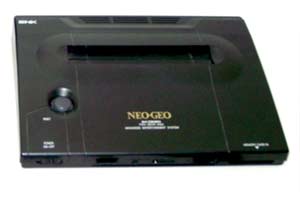 SNK Neo-Geo
SNK Neo-Geo
While most of us had a Super Nintendo or a Sega Genesis during the early 1990’s, hardcore gamers were drooling over SNK’s mega-console.
In addition to the MVS Arcade system, SNK also offered the AES home system. What made the AES stand high above the SNES and Genesis is that it had identical hardware capabilities as the arcade system. In addition to its tremendous sprite capabilities, standard arcade joystick controller, and mammoth ROM sizes, it also debuted with a price tag of $649.99 (nearly $900 when adjusted for inflation) for the system bundle.
While the Neo-Geo had a handful of unique games such as Metal Slug and Windjammers, its specialty was fighting games. Many of the fighting genre’s hottest franchises such as King of Fighters, Fatal Fury, and Samurai Shodown all originated on the Neo-Geo and, of course have the superior versions of the games.
The Neo-Geo is the longest-running console as SNK produced games well into the 21st century. To this day Neo-Geo consoles and games still commands prices in the hundreds of dollars. Even though the console has been emulated for quite a while and many of the best Neo-Geo games have been ported to the PS2, SNK’s original machine is still the holy grail for hardcore retro gamers wanting solid 2D goodness.
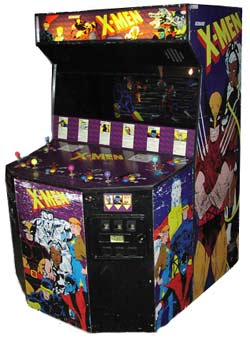 X-Men Arcade 6-Player Dual Screen
X-Men Arcade 6-Player Dual Screen
Every hardcore gamer would love to have a genuine arcade cabinet for either authentic emulation purposes or for having a shrine to their favorite arcade game of years past.
While most arcade cabinets feature a standard one or two joysticks and a single CRT monitor, their was a version of Konami’s X-Men arcade game that blew all other cabinets away.
The premium version of the X-Men arcade game featured a total of six player joysticks and two CRTs screens side-by-side in order to produce a widescreen effect. Design was very much ahead of its time and still hasn’t been matched to this day (If you know of another 6-player arcade game, let me know)
The game itself it also quite enjoyable. It is one of the best side-scrolling brawlers in the arcades and is quite similar to other Konami licensed beatemups like Teenage Mutant Ninja Turtles and The Simpsons. The animation and sound effects are top-notch, and of course, the X-Men universe is always interesting.
I have yet to have an arcade experience that matches the six-player co-op adventure on such a large screen. You can read more about my thoughts and expereriences with this cabinet over at RoomPlay.
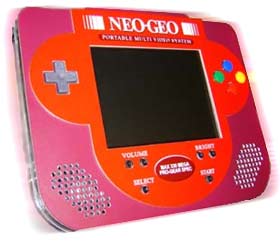 Ben Heck’s Handhelds
Ben Heck’s Handhelds
If you haven’t seen Ben Heckendorn’s work before, be prepared to be amazed. Ben is one of the premier console modders in the world (he wrote the book on the subject, after all) and has taken nearly every major console and turned it into a fully portable handheld version.
Ben builds his portable systems by taking old console such as the Atari 2600, or the NES and cutting up the internal PCB until he can fit it in his hand. He then designs a custom case and cuts cases on a CNC machine. His creations have been featured in such publications as Wired, Popular Science, and Maxim, and on TV shows like The Screen Savers and Attack of the Show. He is also credited with creating a portable Playstation before Sony did. 🙂
He first creations started with various Atari systems, but he progressed into portable versions of the earlier Nintendo and Sega system until he reached the climax of the likes of the N64, Neo-Geo, and Playstation 2. Each system has a built-in screen, runs off of battery power, and features an impressive artistic style. There is also no emulation involved with any of these portable systems. They all boot games from original cartridges or optical media.
Since he does not mass-produce these projects, when he sells them off, they command quite a bundle of money. If you want a shot at purchasing one of his one-of-a-kind handhelds, you should be prepared to spend a hundreds of dollars.
Last year I had the privilege of chatting with Ben about his projects and what challenges he faced when designing them. He is quite an entertaining guy and his handhelds are truly a work of art.
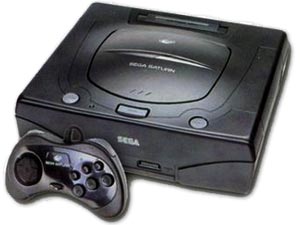 Modded Sega Saturn
Modded Sega Saturn
After the stumbles Sega encountered with the Sega CD and 32X add-ons, people were hesitant to buy Sega’s 32-bit console. Nevertheless, the Sega Saturn was a wonderful piece of hardware that was greatly under appreciated and still has a cult following. The console itself is still relevant as emulation of the Saturn is still not ready for prime time.
While the Saturn may not have the 3D capabilities of the Playstation, it did have quite a few exclusive games that still are amazingly fun in addition to possessing an extensive library of 2D fighters and 2D shooters that beat out Sony’s console.
However, because of the Saturn’s commercial obscurity (especially outside of Japan) many of the most enjoyable games for the system are quite hard to find for an affordable price. Some of the really tough finds, like Panzer Dragoon Saga , Radiant Silvergun , and Keio Yugekitai are being sold for over $200 on eBay.. The original games are becoming more of a collectors item as sellers gouge buyers. Because of this, many Saturn owners have turned to downloading games and playing backups.
Most Saturn owners give the Saturn Swap Trick a try, but quickly find it frustrating and/or inconvenient (and possibly damaging). In the long run, having a modded Saturn makes the process much more enjoyable and allows download-happy gamers to try out a variety of 32-bit titles.
Over the last year or so, there has been quite a renewed interest in the console and prices have been steadily rising for Saturn consoles on eBay. However, if given the chance, you can be sure that the Saturn will be sure to please those looking for old-school games and an interesting alternative the the Playstation and/or complement to the Dreamcast.
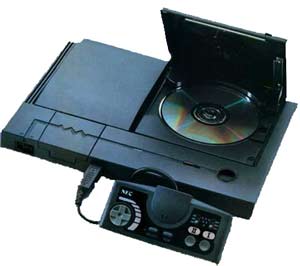 NEC Turbo Duo
NEC Turbo Duo
The TurboGrafx 16 (aka PC Engine in Japan) was a bit ahead of its time and its lack of third party publisher support left it to lose the battle against Sega and Nintendo. NEC’s efforts did leave gamers some interesting hardware that was host to a number of great games that are popular among classic gamers — primarily 2D shooter fans and arcade game buffs.
The TurboDuo is essentially a combination of TurboGrafx-16 and TurboGrafx CD hardware, in addition the Super System BIOS + extra 192k RAM built-in to the motherboard. The TurboDuo was capable of playing standard audio CDs, CD+Gs, TurboGrafx TurboChips, Japanese and North American CD-ROM² (TurboGrafx CD) and Super CD-ROM² titles.
The system is also able to play Japanese PC Engine HuCARDs with a third party HuCARD converter or modification. With a HuCARD converter plus a Japanese Arcade Card Duo, the system can also play Japanese Arcade CD-ROM² games. All of these game format possibilities opened doors to a relatively wide selection of games considering the console’s obscurity.
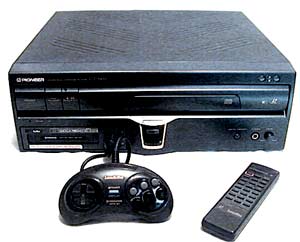 Pioneer LaserActive
Pioneer LaserActive
Before the XBox line of consoles added media capabilities and the PS2 brought DVD playback to gamers, consumer electronics powerhouse, Pioneer offered a mega-console that aimed to bring a similar convergence to many home entertainment centers.
With the Pioneer LaserActive, users could have a LaserDisc/CD player (precursor to DVDs and BluRay, for you kiddies out there) that had both movie and music playback and interactive entertainment possibilities in addition to featuring interchangable modules for several game systems such as the Sega Genesis/MegaDrive, Sega CD, and NEC’s TurboGrafx 16/PC Engine.
Sega’s PAC-S1 module, released at a price of around $350, allowed users to play Genesis/MegaDrive, Sega CD, and specially created Mega LD games through the player. The Mega LD games were briefly thought to be the next evolution in gaming, mainly because the Laserdisc’s massive storage capacity. The addition of either module also made the unit compatible with either Sega or NEC brand control pads.
This all sounds quite interesting, but unfortunately, the prices for all of this was quite outrageous. (Much more than the Neo-Geo). A LaserActive and its gaming modules totaled up to around $2,000. This gave consumers very little reason to purchase the LaserActive instead of the cheaper devices it was designed to replace.
In the 21st century, the LaserActive remains a rare and highly-collectable piece of gaming hardware that has some unique features and may be quite a conversation piece among classic gaming aficionados.
 Modded XBox
Modded XBox
The XBox itself isn’t very retro on its own (even though it does boast a number of 2D fighters), but once you modify the console, you will be able to run emulators for nearly every classic gaming system within a user friendly interface.
There are a handful of independent game shops that have been known to sell pre-modded XBoxes (usually with illegal game copies pre-loaded on the hard drives) and they have been known to be quite popular with celebrities because of their simplicity of use and seemingly endless gaming and media possibilities.
While selling these boxes is obviouly more-than-frowned-upon by law enforcement, you can still use a number of methods to modify your own XBox to bring it to retro gaming glory. While initially, there were only hardware modifications involving modchips, there are also software-based mods that will also allow you to reach your goal. (You can read up on our discussion of said mods in the forums).
Once the XBox is modded, you will be able to replace the XBox’s system software, install media players, and utilize a number of full-speed emulators for systems spanning from the NES to the Playstation and virtually everything in between. The XBox is capable of emulating nearly every system that has been accurately emulated on the PC.
In addition to booting emulation DVDs, you can also store your emulators, ROMs, and ISOs on an upgraded hard drive or network storage. Combine this with controllers like the Logitec Wireless controllers and the XBox’s excellent AV connection and you have the ultimate in gaming convenience and quality.
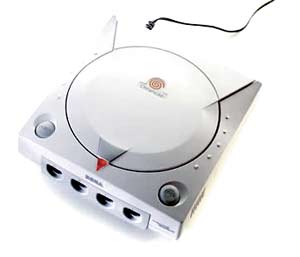 Sega Dreamcast
Sega Dreamcast
If you don’t want to deal with system modifications in order to play emulators on a console, you may also want to take a look at the Sega Dreamcast.
While it may not have to power to emulate many of the newer systems as well as the XBox, it does emulate a number of systems quite well. The NES, Sega Master System, Gameboy, and handful of older systems are emulated to near perfection and have very elegant interfaces. Many games on the Sega Genesis and Super Nintendo are emulated fairly well, but there is occasional slowdown and/or sound glitches.
The combination of the Dreamcast’s power and the skill of creative programmers is really shown off in projects such as Bleemcast (for Playstation emulation) and Neo4All (which works surprisingly well for Neo-Geo AES/CD emulation). While a large chunk of games for these systems are not playable via emulation, the Dreamcast does much more than people originally thought.
As if the emulation isn’t enough of a reason for retro gamers to track down a cheap Dreamcast, you will also have a very large selection of 2D Fighters and Shooters to choose from. The Dreamcast is possibly one of the best consoles for solid 2D gameplay.
Finally, when you combine the wide gaming possibilities with the handful of Dreamcast hacks availible and native VGA support (for very high image quality), and you have an excellent poor-man’s Modded XBox.
 Sega Nomad
Sega Nomad
After the strong success of the Genesis/Megadrive console, Sega turned its research and development teams loose in hopes of burning Nintendo. The result was a flurry of products that eventually confused consumers. While many gamers may remember the ill-fated Sega CD and 32X add-ons, not everyone may recall the official handheld version of the Genesis known as the Nomad.
Even though Sega had the color-screened Game Gear to battle against the popular Nintendo Gameboy, Sega released the Nomad hoping that people would flock to the device to play their already large collection of Genesis cartridges on the go instead of having to buy special portable games.
The Nomad featured a 3.25 inch, high-resolution, backlit LCD screen and required six AA batteries. It also offered an A/V output jack on the top of the unit, allowing owners to play games on a television screen with a separate A/V cable. One particularly interesting feature was the ability for one player to play using a connected TV while another watched on the Nomad. The directional pad on the unit controlled all one-player games, and a port on the bottom allowed a second controller to be plugged in for two-player games. This meant that the Nomad could be a fully functional home system as well as a completely portable handheld solution with a pre-existing library of games available for it. Unfortunately, Genesis add-ons such as the 32X, Sega CD, and Power Base Converter are not compatible with the Nomad.
While the Nomad was a top-quality product that had a large library of Genesis games at its disposal, it initially had a high price tag of $179 and drained batteries very quickly. The Nomad was eventually re-released at a very affordable price through ToysRUs stores, but it was too little, too late. However, those that still enjoy playing their old Genesis carts, may want to pick up a Nomad for the road.
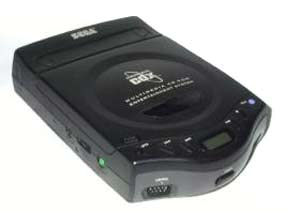 Sega CDX
Sega CDX
At this point you are probably realizing that this list seems a bit biased toward Sega. While that may be true to a certain extent, there is no denying that Sega had some innovative hardware — even if they weren’t commercially successful.
Back in the mid 1990’s it was cool enough to have a portable CD player, so you can imagine how phenomenal it was to have a portable CD player that also played Sega Genesis cartridges and Sega CD discs. (Keep in mind that you can also download, burn, and play Sega CD games with no modifications)
Sega’s CDX was a great engineering feat in its day as it combined a Genesis and Sega CD into a compact and easily portable device. A decade later it is still a highly-collected machine and functions as a novel way to play games from Sega’s best years.
If you have a Genesis and Sega CD (or thinking about picking one up in the future), but would like to do away with the large footprint in your entertainment center and reduce the cable mess and multiple power bricks, the CDX is an ideal solution way to get your Sega 16-bit fix with the least amount of hassle and the ease of portability.
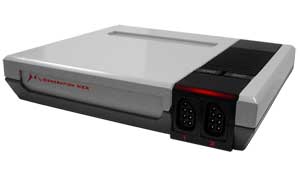 Messiah Generation NEX
Messiah Generation NEX
This probably the most affordable machine on the list, but its a great device for those wishing to play their original NES/Famicom cartridges on fresh, clean hardware.
This NES clone is the most popular of its kind at the moment, but other closes like the Neo-Fami are also available. While they are not without some slight bugs and compatibility issues, they are a good alternative to fixing your 72-pin connector
If the thought of an NES clone isn’t appealing enough, Messiah also produces some top-notch wireless controllers for the console (which also work with your original NES) that use the same technology as Nintendo’s own Gamecube Wavebird controllers.
Did I miss any?
If you can think of any other Dream Machines, please feel free to let me know in the comments section below or in the original forum thread.
Affiliate programs and affiliations include, but are not limited to, the eBay Partner Network or Amazon Associates.
I paid $50 for a NEX and was disappointed. The color and sound reproduction are poor, and it won’t play Gauntlet or Castlevania 3. I’d recommend just getting an NES on eBay instead — you can get one with a brand-new connector for about half what the NEX costs.
That said, Messiah’s wireless controllers are excellent.
I’m suprised you didn’t mention the turbo express.
The Neo Geo AES home system had some kind of compatibility with the memory cards and some of the arcade machines right? Did anyone ever see someone come to the arcade with one of the home memory cards? I would have thought they were a total bada$$ back in the day if a guy came up to me in Samurai Showdown to play me and said “wait I need to put in my memory card” hahaha.
I owned a NeoGeo Home Console for a few years. It was awesome. I, to this day, still refuse to play fighting games unless it’s on the NeoGeo. The huge arcade pad controller was especially awesome.
Unfortunately, I had to sell it.
I, too, owned a NEX and returned it to Messiah as it was very sub-par. I have an NES that’s still in relatively good condition. When I first bought the NEX I thought it was pretty great, but when I compared side-by-side to my NES it really has some major shortcomings. I cannot recommend the system. The wired controllers are also a little wanting.
What about the GP32 and the GP2X?:
http://www.gbax.com/
Both are excellent for emulation, especially the NES. And they’re portable, which makes it that much better. 🙂
One of my favorite machines that I dremt about before getting it was the NES2 – the official NES toploader. It’s super reliable and has a cool SNES style controller. It also has the collectable status of being relatively rare.
The only missing function is the composite out, but I can live happily without that if I can play every NES game without having to blow on them.
I always wanted a NeoAES back in the day, and i finally gave in a few years ago and got one. i love it too much to sell 🙂
And the Sega CD-X, man, I still have mine. I remember back in the day how many people were like “your discman plays genny games!?”
God bless all the moms out there who gave their kids video games. God bless ’em!
This post has been removed by the author.
I must possess this CDX. Wow. I was always a Nintendo person, then I got the Dreamcast towards the end of its run. From the DC, to the Saturn, now the CDX. And the Nomad of course.
need help with xbox mod need programs installed
I strategy on publishing this post all more than the web. Should certainly I give any credit/references back for you?